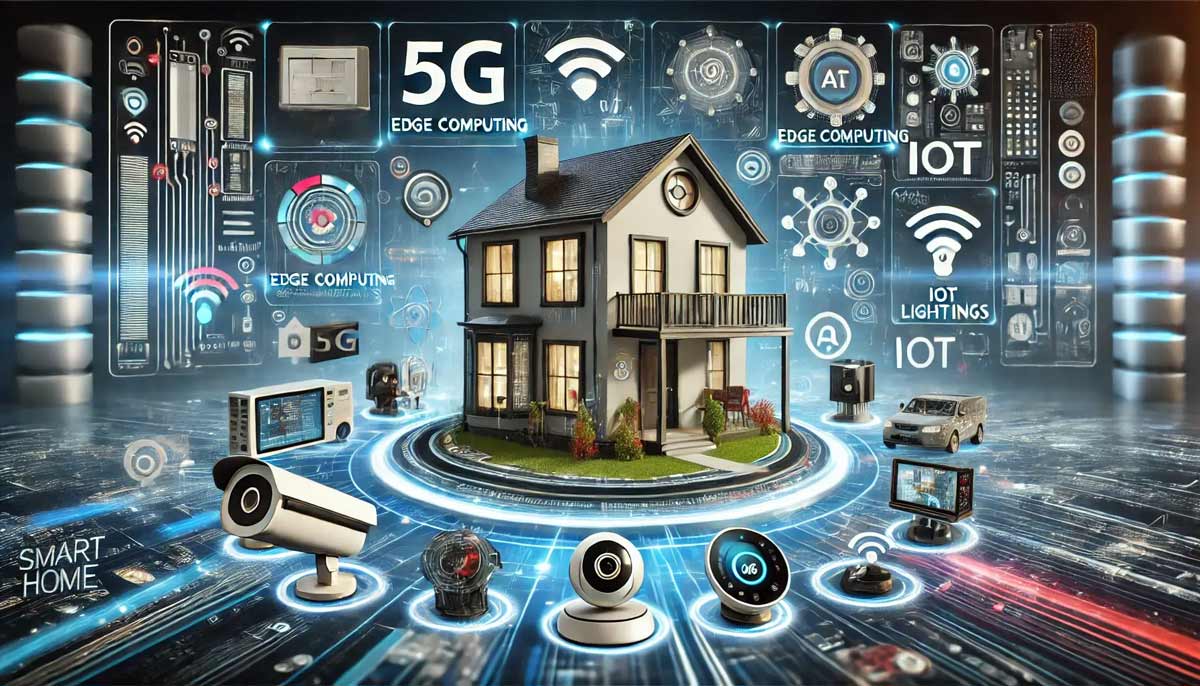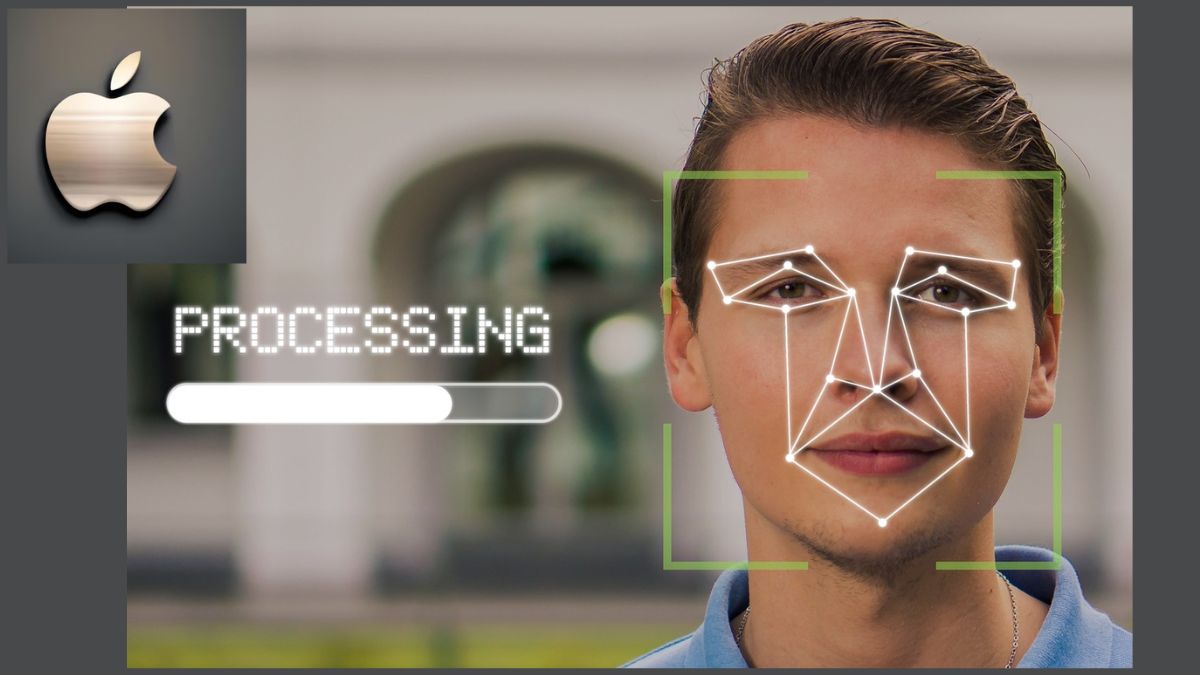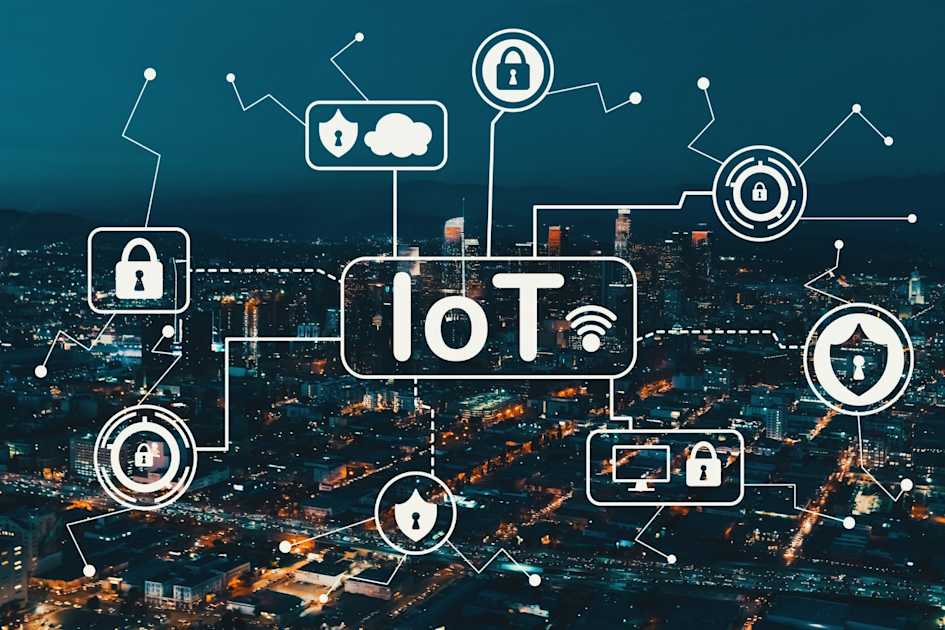Unlocking the Power of IoT: Technologies and Industries Leading the Change
The Internet of Things, or IoT, has evolved from a futuristic concept into an integral part of modern life. This intricate network of connected devices, sensors, and systems is revolutionizing how we live, work, and interact with the world around us. At its core, IoT enables physical objects to collect and exchange data, creating smart environments that enhance efficiency, safety, and convenience.
Understanding the IoT Ecosystem
IoT is more than just smart gadgets—it’s a complex ecosystem involving hardware, software, networks, and data analytics. The main components include:
-
Devices and sensors: These capture data from the environment or user actions, such as temperature sensors, motion detectors, and smart meters.
-
Connectivity: IoT devices connect via wireless or wired networks—Wi-Fi, Bluetooth, Zigbee, LoRaWAN, and cellular networks like NB-IoT and 5G.
-
Data processing: Once data is captured, it’s processed locally or in the cloud using edge computing or centralized servers.
-
Applications and services: These provide actionable insights, automation, and control, enabling smarter decision-making.
Core Technologies Powering IoT
Several breakthrough technologies have accelerated IoT’s growth, making it viable across industries:
| Technology | Description | Impact on IoT |
|---|---|---|
| 5G Networks | Ultra-fast, low latency wireless communication ideal for real-time IoT applications | Enables massive device connectivity, real-time responsiveness |
| Edge Computing | Local processing of data near the device to reduce latency and bandwidth usage | Speeds up decision-making and reduces cloud dependency |
| Artificial Intelligence (AI) | Machine learning algorithms that analyze IoT data for patterns and automation | Powers predictive maintenance, anomaly detection, and smart automation |
| Low Power Wide Area Networks (LPWAN) | Energy-efficient networks like LoRa and NB-IoT designed for long-range, low data rate IoT devices | Supports large-scale deployments with low power consumption |
| Blockchain | Decentralized ledger technology enhancing security and trust in IoT data exchanges | Ensures data integrity and secure transactions |
Architecting the IoT Network
The architecture of IoT systems typically follows a layered model to handle the complexity:
-
Perception Layer: This is the physical layer with sensors and actuators capturing real-world data.
-
Network Layer: Responsible for transmitting data securely and reliably through various communication protocols.
-
Processing Layer: Includes cloud and edge computing infrastructure that processes and stores data.
-
Application Layer: Provides domain-specific services, such as smart home control, industrial monitoring, or healthcare analytics.
-
Business Layer: Manages overall IoT system operations, user management, and data monetization strategies.
IoT Across Industries: Driving Transformation
IoT is far from a one-size-fits-all solution. Different sectors leverage it uniquely to solve their specific challenges:
Healthcare
Connected medical devices enable remote patient monitoring, telemedicine, and asset tracking in hospitals. IoT systems help reduce costs, improve patient outcomes, and enhance operational efficiency.
Smart Cities
Urban areas employ IoT to optimize traffic flows, manage energy consumption, improve public safety, and enhance waste management. Smart city sensors and cameras generate real-time data that city officials use to make informed decisions.
Manufacturing (Industry 4.0)
Industrial IoT (IIoT) integrates smart sensors, robotics, and predictive analytics to boost production efficiency, reduce downtime, and improve supply chain transparency.
Agriculture
IoT-enabled soil sensors, drones, and automated irrigation systems allow farmers to monitor crop health, optimize resource usage, and increase yields sustainably.

Market-Research-Growth-and-Trends-in-Smart-Home-Automation-DM-WebSoft-LLP-(1)
Security Challenges in IoT
With massive data generation and countless connected endpoints, IoT introduces unique security risks:
-
Device vulnerabilities: Many IoT devices have limited processing power, making it hard to implement robust security.
-
Data privacy: Sensitive data must be encrypted and protected against unauthorized access.
-
Network attacks: IoT networks are vulnerable to Distributed Denial of Service (DDoS) attacks and intrusion attempts.
Addressing these challenges requires multi-layered security strategies, including device authentication, encrypted communication, regular updates, and user education.
Living Smarter: The Impact of IoT on Homes, Businesses, and Cities
The Internet of Things (IoT) is no longer a distant dream; it’s a tangible reality that is reshaping the way we live and operate. From intelligent homes that anticipate our needs to smart cities enhancing urban life, and businesses optimizing their operations through connected devices, IoT is at the forefront of a transformative revolution. This part delves into the practical impact IoT has across various spheres, highlighting innovations, benefits, and data-backed insights.
The Smart Home Revolution
Smart homes are arguably the most visible aspect of IoT for everyday consumers. By interconnecting devices, appliances, and systems, smart homes deliver convenience, energy efficiency, and enhanced security.
-
Home Automation: IoT-powered hubs and apps enable centralized control of lighting, HVAC (heating, ventilation, air conditioning), and security systems. Voice assistants like Amazon Alexa and Google Assistant make interactions seamless.
-
Energy Management: Smart thermostats learn user habits and adjust heating or cooling accordingly, reducing utility bills. IoT-enabled smart meters provide real-time energy consumption data.
-
Safety and Security: Connected cameras, smart locks, and motion sensors offer real-time monitoring and alerts, deterring intruders and allowing remote access control.
Table 1: Popular Smart Home Devices Compared
| Device | Main Feature | Connectivity | Price Range (USD) | Compatibility |
|---|---|---|---|---|
| Nest Learning Thermostat | Adaptive temperature control | Wi-Fi | $130 – $250 | Works with Google Assistant, Alexa |
| Ring Video Doorbell | HD video & motion detection | Wi-Fi | $100 – $250 | Alexa, Google Assistant |
| Philips Hue Smart Lights | Color-changing LED lighting | Zigbee, Wi-Fi | $40 – $200 | Alexa, Google Assistant, Apple HomeKit |
| August Smart Lock | Keyless entry & remote control | Bluetooth, Wi-Fi | $150 – $300 | Alexa, Google Assistant |
Industrial IoT: Boosting Efficiency and Predictability
The Industrial Internet of Things (IIoT) harnesses the power of IoT for factories, warehouses, and supply chains. By embedding sensors and using advanced analytics, companies gain unprecedented insight into operations.
-
Predictive Maintenance: Sensors monitor equipment health, predicting failures before they occur, which reduces downtime and maintenance costs.
-
Supply Chain Transparency: IoT tracking enables real-time inventory management and shipment tracking, improving responsiveness and reducing losses.
-
Worker Safety: Wearable IoT devices monitor workers’ health and environmental conditions to prevent accidents.
Table 2: IIoT Benefits and Impact Metrics
| Benefit | Description | Average Improvement (%) |
|---|---|---|
| Predictive Maintenance | Reduced downtime & repair costs | 25 – 40 |
| Inventory Accuracy | Real-time tracking & stock levels | 20 – 35 |
| Operational Efficiency | Automation and data-driven decisions | 15 – 30 |
| Worker Safety | Environmental and health monitoring | 10 – 20 |
Smart Cities: The Urban IoT Advantage
IoT is vital for creating smarter, more sustainable urban environments. Smart city initiatives harness connected sensors and data analytics to improve public services and infrastructure.
-
Traffic Management: IoT sensors and cameras monitor congestion, enabling dynamic traffic light adjustments to reduce jams.
-
Waste Management: Smart bins with fill-level sensors optimize collection routes, reducing fuel consumption and emissions.
-
Public Safety: Connected surveillance and emergency response systems improve incident detection and response times.
-
Environmental Monitoring: Air quality and noise sensors provide real-time data for urban planning and health alerts.
Chart 1: Estimated Energy Savings from IoT-enabled Smart Buildings (% Reduction)
| Region | Energy Savings (%) |
|---|---|
| North America | 18 |
| Europe | 22 |
| Asia-Pacific | 15 |
| Latin America | 12 |
Retail and Customer Experience Transformation
IoT is also revolutionizing retail by enabling personalized customer experiences and optimizing store operations.
-
Smart Shelves: Sensors monitor stock levels and trigger automatic restocking.
-
Beacons: Devices that send location-based promotions and offers directly to customers’ smartphones.
-
Data Analytics: Collecting shopper behavior data to optimize store layout and product placement.

elon-musk-reportedly-on-the-verge-of-raising-billions-for-his-ai-company
Challenges and Considerations in IoT Deployment
Despite its benefits, IoT adoption involves hurdles such as:
-
Interoperability: Different devices and protocols need seamless integration.
-
Data Privacy: Managing customer data responsibly is paramount.
-
Infrastructure Costs: Initial investments in IoT infrastructure can be significant.
The Future of IoT: Innovations, Challenges, and How to Embrace the Connected World
As IoT continues to expand, the next wave of innovations promises even more profound changes to society, industry, and daily life. But alongside this exciting potential come significant challenges—technological, ethical, and societal—that must be addressed to harness IoT’s full benefits responsibly. This final part explores the emerging trends shaping IoT’s future, the risks to watch, and practical guidance for individuals and organizations to thrive in a connected world.
Emerging IoT Innovations to Watch
The future of IoT is driven by advances in multiple technologies working in concert:
| Innovation | Description | Potential Impact |
|---|---|---|
| Artificial Intelligence Integration | IoT devices with embedded AI enable autonomous decision-making and smarter automation | Enhanced personalization, predictive capabilities, and autonomous systems |
| 5G and Beyond | Next-gen networks offer ultra-low latency and massive device connectivity | Real-time applications like autonomous vehicles, remote surgery |
| Digital Twins | Virtual replicas of physical assets for real-time monitoring and simulation | Improved asset management, predictive maintenance, and scenario planning |
| Blockchain for IoT Security | Decentralized and tamper-proof ledgers ensure secure data exchanges | Increased trust, transparency, and fraud prevention |
| Energy Harvesting IoT Devices | Self-powered sensors using solar, thermal, or kinetic energy | Longer device lifespans, reduced maintenance costs |
The Role of Digital Twins in Industry and Smart Cities
Digital twin technology creates exact digital models of physical objects or systems. This allows for sophisticated simulations, monitoring, and predictive analysis. In manufacturing, digital twins optimize production lines and product designs. In urban planning, they simulate traffic flows, energy usage, and infrastructure stress, enabling smarter city management.
Ethical and Privacy Challenges
With the explosion of connected devices collecting personal and sensitive data, privacy and ethics are at the forefront:
-
Data Ownership: Who controls the data generated by IoT devices—the user, manufacturer, or service provider?
-
Consent and Transparency: Users must be fully informed about data collection, storage, and usage.
-
Bias and Discrimination: AI algorithms processing IoT data can inadvertently reinforce biases.
-
Surveillance Concerns: Widespread sensor networks risk eroding privacy and enabling mass surveillance.
Regulatory frameworks like GDPR (Europe) and CCPA (California) are shaping responsible IoT deployment, but continuous vigilance is required.
Preparing for the Connected Future
To successfully navigate the evolving IoT landscape, individuals and organizations should consider:
-
Investing in IoT Education: Understanding IoT capabilities and limitations helps in making informed decisions.
-
Implementing Robust Security: Multi-layered security including encryption, device authentication, and regular updates is vital.
-
Adopting Open Standards: Promotes interoperability and future-proofing.
-
Fostering Ethical Design: Embedding privacy and fairness into IoT systems from inception.
-
Encouraging Collaboration: Cross-industry partnerships accelerate innovation and best practices.

Smart Home Automation Explained
Table 1: Key IoT Trends and Their Projected Adoption Timeline
| Trend | Adoption Stage | Expected Mainstream Deployment |
|---|---|---|
| AI-Driven IoT | Early Growth | 2-4 years |
| 5G-Enabled IoT | Expansion | 1-3 years |
| Digital Twins | Pilot Phase | 3-5 years |
| Blockchain for IoT Security | Emerging | 4-6 years |
| Energy Harvesting Devices | Research & Development | 5-7 years |
The IoT and Sustainability
IoT also plays a critical role in promoting sustainable development. Smart grids optimize electricity distribution reducing waste, precision agriculture minimizes water and fertilizer usage, and IoT-enabled environmental monitoring supports conservation efforts. Harnessing IoT responsibly can help meet global sustainability goals.
Frequently Asked Questions (FAQ) :
Q: What industries benefit most from IoT?
A: Healthcare, manufacturing, agriculture, smart cities, retail, and logistics are among the top sectors leveraging IoT.
Q: How secure are IoT devices?
A: Security varies widely; many devices have vulnerabilities. Strong security practices are essential to protect networks and data.
Q: What is edge computing in IoT?
A: Edge computing processes data near the source device to reduce latency and bandwidth use.
Q: Can IoT work without the cloud?
A: Yes, through edge computing, IoT can function with localized data processing, enhancing speed and privacy.
Q: How does IoT impact privacy?
A: IoT increases data collection scope, raising privacy risks that require robust policies and user awareness.
Conclusion: Embracing an Intelligent, Connected World
The Internet of Things is more than a technological trend—it’s a fundamental shift reshaping society’s fabric. As devices become smarter and more interconnected, our opportunities for efficiency, safety, and quality of life grow exponentially. Yet, with this promise comes responsibility: to design IoT systems that are secure, ethical, and sustainable.
By understanding the innovations, challenges, and strategic approaches outlined here, individuals and organizations can confidently embrace the IoT revolution. The connected future is unfolding now—let’s build it wisely.
Additional Table 2: Security Risks in IoT and Mitigation Strategies
| Security Risk | Description | Mitigation Strategy |
|---|---|---|
| Unauthorized Access | Hackers gain control of IoT devices | Strong passwords, multi-factor authentication |
| Data Interception | Data captured during transmission | End-to-end encryption, VPNs |
| Device Tampering | Physical or remote manipulation of devices | Tamper-resistant hardware, secure boot processes |
| Botnet Attacks | IoT devices used for large-scale DDoS attacks | Network segmentation, anomaly detection |
| Firmware Vulnerabilities | Exploitation of outdated software | Regular updates and patches |
Additional Table 3: Sustainability Impact of IoT Applications
| IoT Application | Environmental Benefit | Estimated Reduction (%) |
|---|---|---|
| Smart Grid Energy Management | Optimizes electricity usage | 15 – 25 |
| Precision Agriculture | Reduces water and fertilizer waste | 20 – 30 |
| Smart Waste Management | Minimizes fuel use and landfill overflow | 10 – 20 |
| Intelligent Transportation | Cuts emissions by reducing congestion | 12 – 22 |
| Environmental Monitoring | Enables early detection of pollution | Indirect but critical for policy decisions |
Chart 1: Projected Growth of IoT Device Installations Worldwide (in billions)
(Bar chart visualization)
Chart 2: IoT Market Revenue by Sector (2025 Projections)
| Sector | Revenue (Billion USD) |
|---|---|
| Smart Homes | 85 |
| Industrial IoT | 110 |
| Healthcare IoT | 55 |
| Smart Cities | 45 |
| Retail IoT | 30 |
(Pie chart showing percentage distribution)
Chart 3: Consumer Concerns About IoT Devices (Survey Results)
| Concern | Percentage of Respondents |
|---|---|
| Data Privacy | 65% |
| Device Security | 58% |
| Complexity of Use | 40% |
| Cost | 35% |
| Interoperability Issues | 30% |
(Horizontal bar chart)
These additions provide more detailed insight into IoT security challenges, sustainability benefits, market size, and consumer perceptions, making the article both comprehensive and data-rich.


